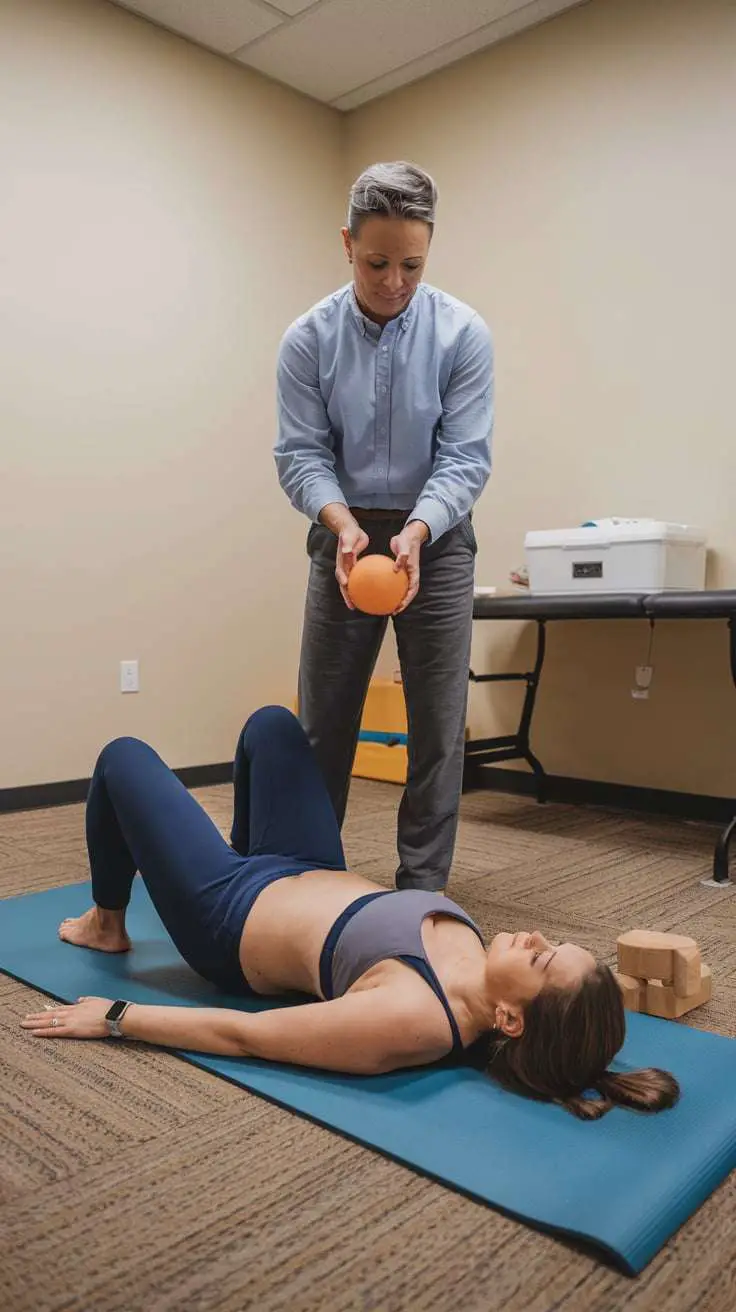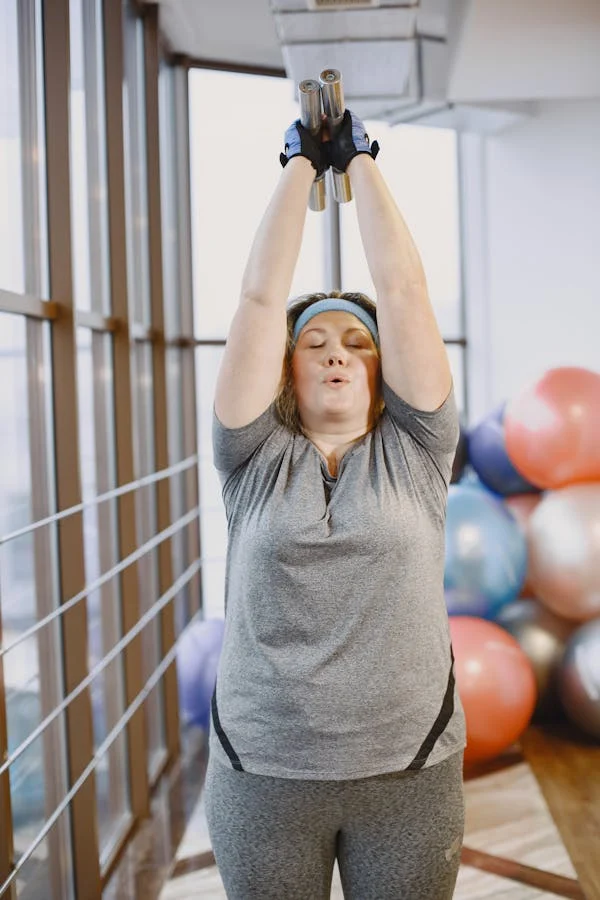Childbirth is an incredible experience, but it can also put a lot of strain on the body, especially the core muscles. Following pregnancy, many new mothers experience a loss of abdominal stability and strength, and frequent issues include pelvic floor dysfunction and diastasis recti.
Postpartum physiotherapy becomes crucial at this point. Postpartum physiotherapy supports general recovery, stabilizes the body, and strengthens the core by emphasizing safe, targeted exercises. In addition to aiding in physical recovery, these activities provide new mothers the strength and resilience they need to cope with life after giving birth.
Whether you’ve had a vaginal delivery or a C-section, strengthening your core can make a significant difference in daily comfort, mobility, and long-term health. Starting on the right path with proper guidance ensures a steady, safe journey to core recovery and overall well-being.
Benefits of Postpartum Physiotherapy Exercises:
Postpartum physiotherapy provides new mothers with numerous benefits that aid in their recovery and long-term well-being. After childbirth, the body undergoes significant changes, particularly in the abdominal and pelvic areas.

Weakened muscles, decreased core stability, and possible problems like diastasis recti (abdominal separation), pelvic floor dysfunction, and back discomfort might result from this. Gentle, guided motions are used in postpartum physiotherapy exercises to target these areas in an effort to progressively improve posture, regain function, and rebuild strength. The main advantages are as follows:
Core Strength Restoration
Pregnancy stretches the abdominal muscles, making them weaker and less stable. Core-strengthening exercises help new moms regain stability, essential for daily movements, lifting, and carrying a baby. Strong core muscles also improve balance and reduce the likelihood of injury.
Pelvic Floor Health
The pelvic floor endures immense pressure during pregnancy and childbirth, which can cause incontinence, discomfort, or even pelvic organ prolapse. Targeted physiotherapy exercises strengthen the pelvic floor, reducing these symptoms and supporting a more comfortable recovery.
Reduction in Back Pain
Weak core and pelvic floor muscles can lead to poor posture and an increased load on the lower back, resulting in pain and discomfort. Physiotherapy exercises correct posture, rebuilds abdominal strength, and helps alleviate back pain, enhancing day-to-day comfort.

Prevention and Management of Diastasis Recti
After pregnancy, diastasis recti, or the separation of abdominal muscles, is frequent. If left untreated, it may lead to core instability and weakening of the abdominal muscles. By closing the gap between muscles, physiotherapy exercises assist restore function and lower the chance of long-term issues.
Mental and Emotional Well-being
Beyond physical benefits, postpartum physiotherapy exercises can positively impact mental health by promoting a sense of strength, control, and progress. Engaging in guided movements encourages mindfulness, reduces stress, and boosts confidence, helping new mothers feel more empowered during recovery.
Top Core-Strengthening Exercises:
After giving delivery, strengthening the core is essential to regaining general stability and function. In addition to supporting daily tasks, a well-balanced core helps avoid injuries and reduces back and pelvic pain. The following are some of the best core-strengthening activities that are safe and efficient for new mothers that are suggested in postpartum physical therapy:
Pelvic Tilts
- Description: This gentle exercise helps engage and strengthen the abdominal muscles while promoting pelvic alignment.
- How to Perform: Place your feet flat on the floor and bend your knees while lying on your back. Take a deep breath, then slowly tilt your pelvis upward to flatten your lower back against the floor as you exhale. After a few seconds of holding, let go.
- Benefits: Pelvic tilts improve core engagement and promote awareness of pelvic positioning, which is essential for stability.
Diaphragmatic Breathing
- Description: This technique enhances core strength by engaging the diaphragm and deep abdominal muscles.
- How to Perform: Sit comfortably or lie on your back. Put a hand on your belly and another on your chest. Take a deep breath through your nose, keeping your chest motionless and letting your belly rise. Feel your belly drop as you slowly release the breath through your mouth.
- Benefits: Diaphragmatic breathing strengthens the deep core muscles and encourages relaxation, making it an excellent foundation for further core exercises.
Heel Slides
- Description: This exercise works the lower abdominal muscles and promotes coordination.
- How to Perform: Lie on your back with knees bent and feet flat. Slowly slide one heel away from your body, keeping the other foot flat on the floor. Return to the starting position and repeat on the opposite side.
- Benefits: Heel slides engage the core while maintaining pelvic stability, helping to improve overall muscle control.
Bridges
- Description: Bridges are effective for strengthening the glutes and lower back while engaging the core.
- How to Perform: Lie on your back with knees bent and feet flat. Inhale and press through your heels to lift your hips off the ground until your body forms a straight line from shoulders to knees. Hold for a few seconds before lowering back down.
- Benefits: This exercise not only strengthens the core but also enhances pelvic floor function and helps alleviate lower back discomfort.
Modified Plank
- Description: A modified plank is a great way to build core stability without straining the abdominal muscles.
- How to Perform: Start on your hands and knees (quadruped position) with your hands directly under your shoulders. Engage your core and extend one leg behind you while keeping your hips level. Hold for a few breaths, then switch legs.
- Benefits: The modified plank targets the core while maintaining a safe position for new mothers, building strength gradually.
Side-Lying Leg Lifts
- Description: This exercise targets the obliques and hip stabilizers, promoting a well-rounded core.
- How to Perform: Lie on your side with your legs stacked. Lift the top leg up to hip height, keeping it straight, and lower it back down. Repeat on both sides.
- Benefits: Side-lying leg lifts improve lateral core strength and stability, contributing to better overall function.

Incorporating these exercises into a postpartum physiotherapy routine can greatly assist new mothers in rebuilding their core strength. It’s important to perform these exercises mindfully and consult with a qualified physiotherapist to ensure safety and proper technique, especially when dealing with the unique challenges of postpartum recovery.
How to Incorporate Postpartum Physiotherapy Into Your Routine:
A successful postpartum recovery depends on incorporating postpartum physical therapy into your everyday routine. It can be difficult to find time for self-care given the emotional and physical demands of new parenthood.
Nonetheless, incorporating postpartum physiotherapy exercises into a regular program will greatly improve your general health and recovery process. Here’s how to successfully fit these workouts into your everyday schedule:
Establish a Schedule
- Set Specific Times: Designate specific times each day for your postpartum physiotherapy exercises. This could be early in the morning before your baby wakes, during nap times, or in the evening when you can focus on your health.
- Start Small: If you’re new to exercising postpartum, aim for short sessions (10-15 minutes) to make it manageable. Gradually increase the duration as you become more comfortable and regain strength.
Create a Dedicated Space
- Designate a Comfortable Area: Choose a quiet and comfortable space in your home where you can practice your exercises without distractions. This space should be well-lit and equipped with a mat or soft surface for floor exercises.
- Keep Equipment Handy: If you’re using any props, like a resistance band or a small ball, keep them within reach in your designated space. This will make it easier to jump into your exercises without needing to gather equipment each time.
Use Online Resources or Classes
- Find Online Programs: There are many online resources and classes focused on postpartum physiotherapy. Look for programs that offer guided exercises specifically tailored for new moms.
- Consider Virtual Appointments: If possible, schedule virtual sessions with a physiotherapist who specializes in postpartum recovery. They can provide personalized guidance, ensuring you’re performing exercises correctly and safely.
Incorporate Family Time
- Involve Your Baby: If your baby is awake, consider including them in your routine. You can perform exercises while holding your baby or place them on a play mat nearby, allowing you to bond while working on your strength.
- Get Support from Your Partner: Encourage your partner or family members to join you. Having someone to exercise with can make it more enjoyable and help hold you accountable.
Listen to Your Body
- Modify Exercises as Needed: Pay attention to how your body responds to different exercises. It’s essential to adjust your routine based on your comfort level and any physical limitations you may experience postpartum.
- Rest When Necessary: Ensure you’re listening to your body and allowing for rest days as needed. Recovery is crucial, and pushing yourself too hard can lead to setbacks.
Track Your Progress
- Keep a Journal: Documenting your exercises, how you feel, and any changes you notice in your body can motivate you and provide insight into your recovery journey.
- Set Realistic Goals: Establish small, achievable goals for your postpartum physiotherapy routine. Celebrate each milestone, whether it’s completing a certain number of exercises or noticing improved strength.
Prioritize Self-Care
- Make It a Routine: Treat your postpartum physiotherapy exercises as a vital part of your day, just like feeding or bathing your baby. Prioritizing this time for yourself can help improve your physical and mental health.
- Integrate Mindfulness Practices: Consider incorporating mindfulness or breathing exercises into your routine to enhance relaxation and reduce stress while you engage in your physiotherapy.
Precautions and Tips for Safe Practice:
Engaging in postpartum physiotherapy is essential for recovery and rebuilding strength after childbirth. However, it’s crucial to approach these exercises with care and awareness to ensure safety and effectiveness. Here are key precautions and tips for safe practice that every new mother should consider:
Consult Your Healthcare Provider
- Get Medical Clearance: Before starting any postpartum physiotherapy exercises, it’s essential to consult with your healthcare provider or a qualified physiotherapist. They can assess your individual health status, address any specific concerns, and provide guidance on when it’s safe to begin.
- Discuss Any Complications: If you experienced complications during childbirth, such as a C-section or significant tearing, inform your healthcare provider. They can recommend modifications or alternative exercises based on your recovery needs.
Start Gradually
- Ease Into Exercise: It’s important not to rush into a rigorous exercise routine immediately after childbirth. Begin with gentle movements and gradually increase intensity and duration as your body adapts. Basic exercises like pelvic tilts or diaphragmatic breathing are an excellent way to ease into a postpartum physiotherapy regimen.
- Pay Attention to Your Body: Always listen to your body’s signals. If you experience pain, discomfort, or unusual symptoms during an exercise, stop immediately and reassess. It’s better to progress slowly than to risk injury.
Focus on Proper Form
- Maintain Alignment: When performing exercises, ensure your body is properly aligned. This includes maintaining a neutral spine and engaging your core throughout the movements. Proper form minimizes the risk of injury and maximizes the effectiveness of each exercise.
- Seek Guidance: If you’re unsure about your technique, consider working with a qualified physiotherapist who can provide hands-on guidance and ensure you’re performing exercises safely and correctly.
Modify as Needed
- Adapt Exercises for Your Level: Not all exercises will be suitable for every new mother. Be prepared to modify movements based on your current fitness level and any physical limitations. For instance, if standard planks feel too challenging, consider performing modified versions on your knees until you build strength.
- Avoid High-Impact Activities: Activities that involve jumping, heavy lifting, or rapid movements should be avoided in the early postpartum period. Focus instead on low-impact exercises that allow you to build strength gradually.
Prioritize Pelvic Floor Health
- Incorporate Pelvic Floor Exercises: As part of your postpartum physiotherapy, prioritize exercises that specifically target the pelvic floor. These may include Kegel exercises and other movements designed to strengthen pelvic floor muscles, which are crucial for bladder control and overall core stability.
- Be Mindful of Symptoms: If you experience symptoms such as incontinence or pelvic pain during or after exercise, consult your healthcare provider. These may indicate that your pelvic floor requires additional attention or a modified approach.
Stay Hydrated and Nourished
- Maintain Hydration: Staying hydrated is vital for overall health, especially when you’re physically active. Drink plenty of water before, during, and after your exercises to support recovery and energy levels.
- Eat a Balanced Diet: Ensure your diet includes a variety of nutrients to fuel your body during recovery. A balanced diet supports muscle healing and overall well-being, making it easier to engage in regular physiotherapy.
Incorporate Rest and Recovery
- Allow for Recovery Time: Rest is just as important as exercise in the postpartum period. Make sure to incorporate rest days into your routine to allow your body to recover fully. Overtraining can lead to fatigue and may hinder your progress.
- Practice Relaxation Techniques: Consider integrating mindfulness, yoga, or gentle stretching into your routine to promote relaxation and reduce stress.
Build a Support System
- Encourage Family Involvement: Engage your partner or family members in your postpartum physiotherapy journey. Having a support system can motivate you and provide accountability, making it easier to stay committed to your exercises.
- Join a Community: Look for local or online groups focused on postpartum recovery and physiotherapy. Sharing experiences and tips with other new mothers can provide encouragement and additional resources.
Conclusion:
In conclusion, restoring core strength through postpartum physiotherapy is vital for new mothers seeking to recover physically and regain confidence after childbirth. Women can successfully strengthen their core, improve pelvic floor health, and improve their general well-being by adhering to safe procedures, seeking advice from medical specialists, and implementing specific exercises into their daily routines.
Making this portion of postpartum recuperation a priority helps moms on their path to motherhood and promotes physical repair. Seize the chance to rest and rejuvenate yourself. Click to learn more.
FAQs:
What is postpartum physiotherapy?
Postpartum physiotherapy is a specialized form of therapy designed to help women recover physically after childbirth. It focuses on restoring core strength, pelvic floor function, and overall fitness through targeted exercises and techniques.
When should I start postpartum physiotherapy?
It’s generally safe to begin postpartum physiotherapy exercises around 6-8 weeks after childbirth, but it’s essential to consult with your healthcare provider for personalized recommendations based on your recovery.
What are the benefits of postpartum physiotherapy?
Benefits include improved core strength, enhanced pelvic floor function, reduced back pain, and better overall physical health. It can also help with diastasis recti and improve posture, making daily activities easier.
Are there any risks associated with postpartum physiotherapy?
When performed correctly and under professional guidance, postpartum physiotherapy is safe. However, it’s crucial to listen to your body and stop any exercise that causes pain or discomfort.
Can I do postpartum physiotherapy at home?
Yes, many postpartum physiotherapy exercises can be done at home. However, it’s advisable to start with guidance from a qualified physiotherapist to ensure proper technique and safety before continuing independently.
